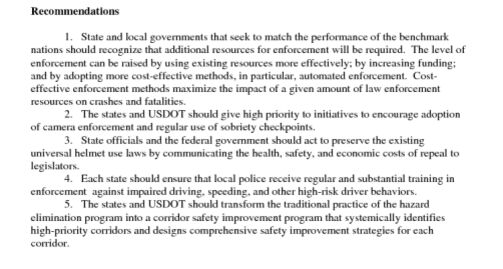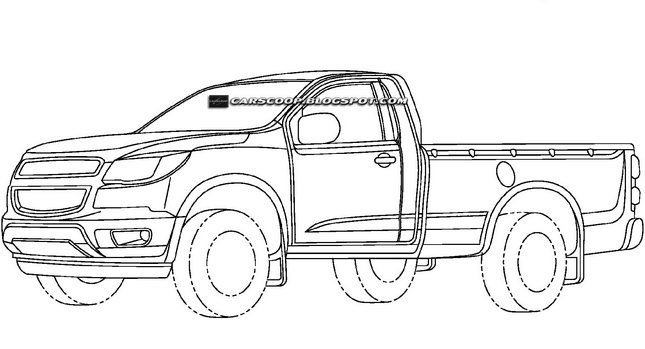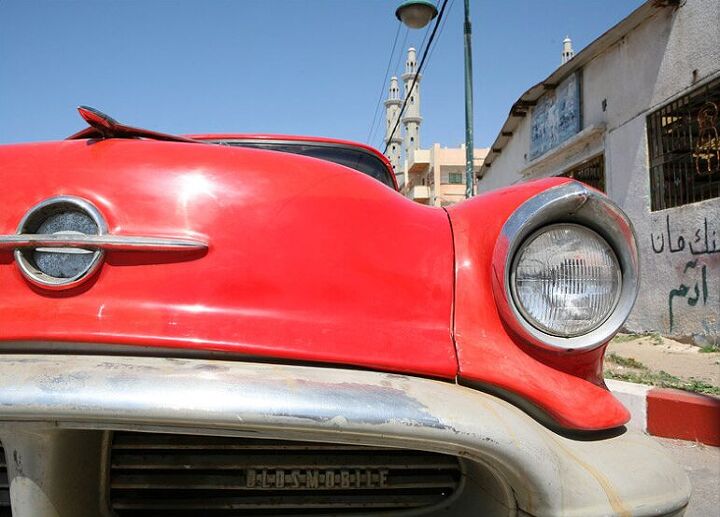#Overseas
The Mystery Of The Fiat-Gaddafi Connection
Back in 1976, the Italian automaker Fiat had been badly battered by a global energy crisis and the resulting malaise infecting the global auto industry. In what Time Magazine described at the time as “a devastatingly ironic example of petropower,” Col. Muammar Gaddafi instructed his Libyan Arab Foreign Bank to invest some $415m into the Italian automaker, giving it a stake that would eventually grow to some 14 percent of the firm’s equity.
By 1986, Fiat’s Libyan stakeholders were becoming more trouble than they were worth. In the wake of the Lockerbie bombings, the US introduced sanctions on Libya, and Fiat’s Libyan connection left its attempts to bid for US military contracts (particularly those related to Ronald Reagan’s Strategic Defense Initiative) dead on arrival. As a result, Fiat and its shareholders bought back the entire 14 percent Libyan stake in the firm, presenting the Libyan Arab Foreign Bank-controlled Banca UBAE with a $3.1b check. And, according to what a Fiat spokesperson told us yesterday, that is where the story ends. But thanks to the now-ubiquitous Wikileaks, we have found that this story may in fact go farther than that. In fact, as the evidence stands right now, either the US State Department is working with bad information (which major news sources have yet to correct), or Fiat is lying about its ties to the embattled Gaddafi regime.
Ask The Best And Brightest: Which Automaker Will The UAW Target?
The WSJ gets a little closer to the truth about the UAW’s incredible disappearing transplant organizing campaign, reporting
On Tuesday, UAW leaders meeting here described plans to reach out to foreign unions and consumers in what would be their first major campaign since failed efforts in the last decade at Nissan Motor Co. and auto-parts supplier Denso Corp. They hope to be more successful by reaching out to foreign unions at the auto makers’ overseas plants and bringing pressure from prayer vigils, fasts or protests at dealerships.
A person familiar with the matter said the union is now planning to target one foreign auto maker and has narrowed its list to three or four companies. Inside the union, much of the talk centers on targeting the now-struggling Japanese auto maker Toyota or Korea’s Hyundai, this person said.
The UAW has set aside tens of millions of dollars from its strike fund to bankroll its campaign. International actions are to be coordinated with foreign unions and run by some three dozen student interns recruited globally, UAW officials said. When the interns return to their home countries after learning about the UAW efforts in the U.S., they’ll be expected to organize protests against the auto maker, UAW officials said.
OK, so it’s a little bit strange that the UAW is entrusting a campaign that UAW President Bob King calls “the single most important thing we can do for our members ” to a bunch of interns. Still, with “tens of millions of dollars” allocated towards the campaign, some automaker somewhere will be feeling the union’s hot breath on its neck in due course. So, which automaker will the UAW target? Which automaker should they target? And with the UAW apparently refusing to fight the two-tier wage structure, will any transplant or foreign workforce want to join up?
GM's "Made In America" Fiasco
Ruh Roh! A press release from the Made In USA Foundation [via theautochannel] picks the kind of fight that GM has been assiduously avoiding for years (but especially since the bailout):
General Motors, bailed out by U.S. taxpayers and still owned in part by the federal government, is stripping country of origin labels off of its cars at auto shows around the country, says the Made in the USA Foundation. The Made in the USA Foundation has charged GM with violating the American Automobile Labeling Act (AALA) which requires all new cars that are offered for sale to include country of origin information.
The AALA requires new cars to provide information on the window sticker, including where the car was assembled, the U.S. and other country content, where the engine was made and where the transmission was made.
Joel D. Joseph, Chairman of the Made in the USA Foundation, said, “General Motors wants to hide the fact that, even after the government bailout, it has moved production of vehicles offshore. The Cadillac SRX is now made in Mexico. The Buick Regal is made in Germany.”
GM claims that the AALA only applies to cars for sale at dealers not at auto shows. Joseph stated that he worked with Senator Barbara Mikulski, who wrote the law, and that the intent of the law was to inform consumers about the country of origin of new cars. Joseph said, “Millions of consumers get their first look at cars at auto shows. The law applies to cars that are ‘for sale’ and auto show cars, except concept cars. Identical GM cars are for sale at thousands of dealers across the nation, and display vehicles should include country of origin information. The U.S. government saved GM and still owns one-third of the company. General Motors should comply with the intent of the law.”
Nissan And Mitsubishi Snuggle Closer
At a press conference announcing new cooperation between Nissan and Mitsubishi, Nissan’s Carlos Ghosn presented the tie-up as a far-sighted move that will help both sides prosper. The Renault/Nissan boss explained
In the global auto industry, cooperation on specific projects among automakers is becoming increasingly common. It is a signal of how our industry is evolving to sustain success over the long term
But if his words were saying “cooperation,” Ghosn’s body language said “I’m hungry and your company looks bite-sized.”
Saudi Arabia Builds A Budget Car
American Roads Safer Than Ever… But How Safe Is Safe Enough?
On-road fatalities per vehicle-mile-traveled in the United States have fallen to their lowest level in recorded history ( and dropping fast)… so safety advocates must be thrilled with the success, right? Wrong. After all, success is almost more dangerous to a crusade than failure. Luckily for the hand-wringing faction, a study by the National Research Council has re-defined what it means to be safe enough on America’s roads: rather than comparing fatalities to America’s past (which makes the current environment seem great), the key is comparing America’s safety record to completely different countries. Take it away, New York Times:
While France and 15 other high-income nations cut their traffic fatalities by half from 1995 to 2009, the United States showed only a 19 percent reduction over that same time period. Britain dropped the number of fatal accidents by 39 percent over the last 15 years, and Australia by 25 percent.
And what makes the US different than these other countries (other than the fact that we apparently don’t care about traffic deaths)? The problem, it turns out, is our insufficiently intrusive government.
GM IPO: Go Ask Opel (Or Daewoo)
With news that GM’s IPO price could be headed as high as $33/share (only $10.67 more per share to taxpayer payback!), boosting the offering to some $12b, some might think that the decks have been cleared of skeptics. Not so. Though GM has emphasized its international flavor during its IPO pitch, it’s stayed away from the fact that its overseas operations haven’t been immune to trouble. Take Opel (please). Though invaluable as a development center for GM’s upscale global products, Opel is miles of bad road away from actual profitability. Just ask the guy who tried to buy Opel back when the General was trying to fire-sale its European operations.There is a lot of euphoria about the IPO, but if you dig into the numbers, they still have a problem in Europe. They are doing worse than when we looked at them two years ago, and it’s going to take a lot of cash to fix Opel. That’s my concern on the IPO.
Chevrolet Mid-Sized Truck Planned, But Not For US?
Yesterday we suggested that this line drawing of a smaller-than-full-size Chevrolet pickup meant that Chevy would be “recommitting” to the US market for compact pickup trucks. Today, however, Bloomberg reports that Chevy is planning a mid-sized truck for production in Thailand, and that GM is focusing its smaller pickup efforts on the developing markets in South East Asia and Brazil (importation to Europe is also planned). GM’s Martin Apfel explains
The logical consequence is to build where the customer wants it, as that keeps your costs down. [Thailand and Brazil are] the two centers of gravity for midsize trucks
What's Wrong With This Picture: Hungry Like A Wolf Edition
Saudi Arabia Sheiks Up The SUV Game
Chevy Versus Chevrolet: An (Official) Explanation
So, this was all about new markets where the Chevrolet brand is relatively unknown. In other words, the markets where consumers are just as likely to call their Chevrolet a “ChevWoo” or “Daewoo” as a “Chevy.” The reality is that nothing hurts the Chevrolet brand abroad more than the continued existence of the Daewoo brand… by comparison the use of a familiar nickname is a minor issue. And what is going to be easier for a non-English-speaker to say, Chevrolet or Chevy? Anyway, based on the harried, apologetic tone in this video, it’s pretty clear that GM would rather this controversy had never started. So why did the new ad boys feel like dropping “Chevy” was so important?
GM Q1 Global Sales: Improving, But Not Dominating
Whereas Chrysler’s surprise operating profit in the first quarter of this year was achieved mainly through cost-cutting, GM’s just-announced Q1 profit comes on the strength of sales increases in most of its global markets. Though The General’s sales numbers are still lower than they need to be, momentum is headed in the right direction… albeit somewhat more slowly than had been hoped.
The Curbside Classics Of The Gaza Strip
It’s a curious coincidence of history that the most anti-American parts of the globe are so dependent on old American cars. Havana is the classic example of this, and its still-rolling examples of classic American cars have become photographic icons, simultaneously representing both the failures of the communist government and the excesses of the preceding (but long-gone) American-backed regime. Another example of history written in the automotive landscape comes to us today from The BBC, which hosts a slideshow of cars from the Gaza Strip.
Record Car Sales for India, Rising Prices Anticipated
For the first time, monthly car sales in India exceeded 150,000 units according to February numbers released by SIAM, the Society of Indian Automobile Manufacturers [via The Economic Times of India]. Those figures represent a 33% improvement over Feb. 2009. Analysts attribute the sales bump to people pulling the trigger in advance of expected higher taxes in the national budget. Indian automakers anticipate that the increased demand will slow as prices rise due to higher interest rates and new emissions standards.



























Recent Comments